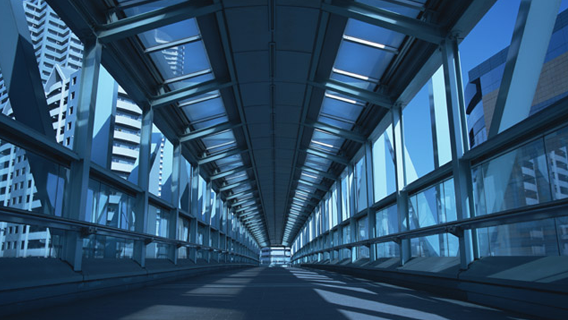Upon exiting the Momoyama Goryō train station, (a 15-minute ride from Kyōto on the Kintetsu line), you will be greeted with the westbound Ōtesuji-dōri, a long street of stores where trade has been plied since days of old. Centuries ago, it would have been bustling with the air of the then capital, serving as the main street running from the large Ōtemon gate of feudal lord, Hideyoshi Toyotomi’s Fushimi castle, down through the castle township. In the castle township there were located estates of subordinate lords. Recollecting times of old, “Fushimi”, survives to this day in the form of the township’s name.
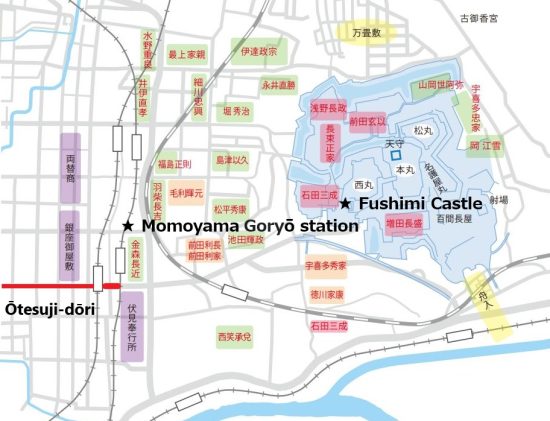
A map of Fushimi castle and surrounds
Throughout the Edo period, Fushimi served as a strategic hub facilitating trade along the river-based route from Ōsaka to Edo. Kyōto-bound traders arriving via the prosperous Yodo River and traders bound to journey the 53 stations of the Tōkaidō coastal route to Edo, would both have been common sights during that time. Before long though, would come the rise of the Meiji age with its adoption of western technology including steam locomotives, paving way to the development and shift in adoption of rail-based trade.
Not to be left behind with the times, the Fushimi region would transition to promoting itself as a source of abundant and delicious underground water*, perfect for sake production. This gambit would pay off, attracting sake producers from Kyōto city and surrounding prefectures, and resulting in the establishment of mass production operations for the superb "Nada" sake (a sake pioneered in coastal Nada). Sake produced in the Fushimi area became renown countrywide and is satisfying domestic customers to this very day. Large sake breweries and hybrid brewery-warehouses remain standing in the Fushimi area, imbuing it with an atmosphere of yore and strongly shaping its image. Even though apartment buildings and shopping malls have started to dominate the landscape, seeing the traditional Japanese-style gable roofs peeking out in the background of these more modern contrivances evokes a playful yet hopeful image of the sake establishments attached to them, waiting to pounce out and regain their former glory.
*(in fact, the origin of the name "Fushimi", is derived from a term meaning "water going underground to emerge in a spring")
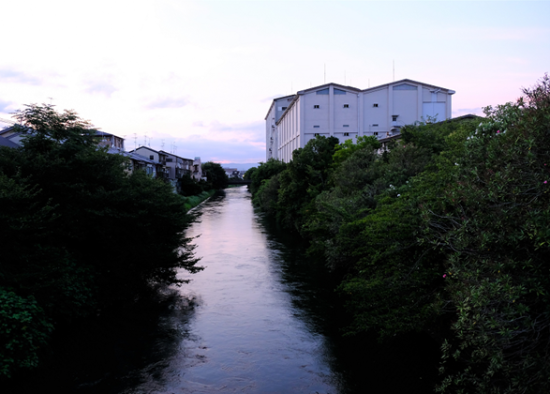
Gekkeikan Sake company’s “Showagura Sake Brewery”, situated along the
banks of the Fushimi canal (photographed on the 23rd of July, 2021 at 7pm)
Built along the banks of Fushimi canal is the "Showagura Sake Brewery", an establishment that gets its name from the fact that it produced the very sake that was used in Emperor Showa's enthronement rites. Showagara served as Gekkeikan Sake company's former HQ and contained in addition to the industrial/factory component, a dedicated reception hall for imperial envoys, an auditorium, an employee cafeteria and more. The building is of western ferro-concrete construction and adopted industrial cooling technology from North America, which was highly unusual for breweries in Japan at the time, and would serve as a site for sharing knowledge on sake brewing. It is a building with much history and cultural value in Japan. Moreover, it was the site where great strides were made in improving both brewery employee welfare and sake brewing technology, which would benefit the industry greatly.
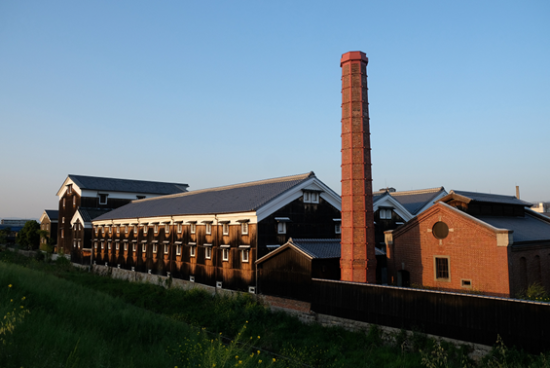
Sake brewery and red brick smokestack bathed in the light of dusk
(photographed on the 19th of April, 2021 at 6pm)
Traveling eastward off of Ōtedōri brings you onto Takeda highway. In Meiji 28 (1895) The Kyōto Electric Railway company would build Japan's first electric streetcar route in proximity to the Takeda highway area, running from Kyōto station to Aburagake, Fushimi. If you venture west from there, you will cross the Fushimi canal. The Fushimi canal is situated at the outer moat of Fushimi castle. Continuing further west, brings one to Shin-takasegawa, a waterway that passes through Kyōto city. In the bridge's vicinity, is the iconic sight of the lined-up gabled roofs belonging to 3 of Matsumoto brewery's canal facing buildings. The early-modern architecture of the wooden brewery buildings and the red brick smokestacks complement each other beautifully, with the striking reddish brown of the brick buildings harmonizing with the rich browns of the wooden ones. Furthermore, the well-balanced black and white of the wooden skirting structures strengthens its overall visual appeal.
The brewery’s design not only satisfies corporate needs, but it also communicates the fact that it is proudly of Fushimi, and of Kyōto. Afterall, our family first developed our business and skills in the heart of Kyōto, and then in 1923, driven by a passion to advance our craft, sought out the exquisite waters of Fushimi to found the brewery you see here today, and this place is imbued with that pride and passion I feel.
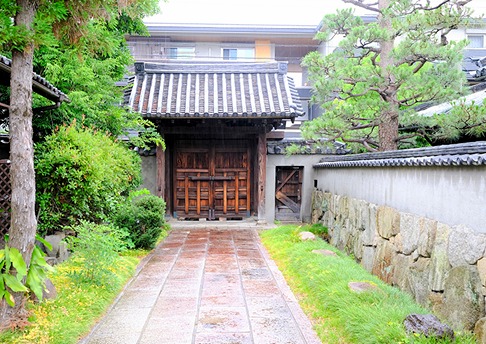
The ancient entrance gate to Shōden-in, used as the main company entrance
until the 1970s (photographed on the 13th of June, 2021 at 8:20am)
Passing through the main entrance to the Matsumoto Brewery and past a thicket of trees, you are greeted with the genkan entrance space and front gate of the traditional Japanese building, Mangyō-in. It stands on the former site of the historical Shōden-in temple, which was itself constructed about 400 years ago. Shōden-in was commissioned by Oda Nobunaga's younger brother, Nagamasu, and had the claim of being Kyōto's oldest Zen Buddhist temple, belonging to a group of small temples associated to the great Kennin-ji temple. It is believed that it housed some of Japan's finest teahouses, including the famous Jo-an teahouse. Shōden-in was seized by the government in 1873 during the Meiji Restoration, which would invite a number of unfortunate events leading to it being unceremoniously divided and sold off and subsequently demolished as a consequence of wartime fire prevention construction efforts. The head of the Matsumoto family, Jihei Matsumoto, would go on to purchase the property for 50,000 Yen in 1929 as the country still felt a degree of post-war disorder. As a matter of fact, Mangyō-in itself has an interesting story of its own.
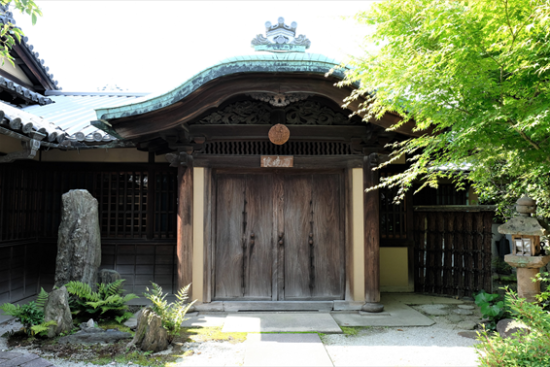
The entrance to Mangyō-in. Seen hanging in the center is the symbol of our brewery,
a "Cedar Ball" (a ball-shaped ornamentation made of cedar)
(photographed on the 15th of May, 2021 at 9:16am)
In 1923, Matsumoto Sake Brewery would move from Shichijo in central Kyōto city to Fushimi, in a rather auspicious location, seeing as it intersects both the townships of Ebisu-chō and Daikoku-chō, each being named after the renowned (and rotund) gods of wealth and fortune.
The name, "Mangyō" (lit. ten thousand+dawn/daybreak), gets its meaning from the approximately 10,000 days dedicated to its completion. Following the move, Jihei Matsumoto would completely absorb himself into the craft of brewing, fostering a philosophy and set of values that didn't necessarily align themselves with others in his field. One might even dare say that upon moving to the splendid waters of rural Fushimi, this brewery from the big smoke has brought a type of revival to the remains of Shōden-in, and wanted to leave its own mark on the region, expressing its identity of a brewing house from the heart of Kyōto city. Surely this identity is apparent from the beauty and aesthetic sense achieved by the very man that came here from the city.

Internal layout of Mangyō-in
The modest accommodations of Mangyō-in include facilities such as the front and side entrances, the tearoom and its antechamber, tatami rooms and a kitchen for guests to entertain, all designed to let you enjoy a taste of the elegance of central Kyōto city while staying in Fushimi. Since inception, Mangyō-in has been serving as a "Geihinkan" (a guesthouse). Adorning the floor of the lobby in winter, you will see a Nabeshima style cotton rug (a traditional rug often depicting flora), and as the warmer months approach, a special oiled or lacquered mat made of paper called a "Yuton" is spread out. In order to enjoy the splendid garden views from inside, the standing pillars have been sized and placed in a way to ensure a wide field of vision. Additionally, looking through the glass-paned Japanese-style sliding doors amusingly feels like you're looking through the viewfinder of a single lens camera. It truly feels like one can observe the changing seasons through the brightly glittering frames of these doors.

A: View from a guest room (photographed on the 18th of April, 2021 at 9:04am)

B: View from the living room (photographed on the 18th of April, 2021 at 9:05am)

Schematic of the Japanese Garden of Mangyō-in
Japanese-style gardens get much of their appeal from their beautiful green colors. Though of course trees are important for color, moss is especially important in imparting the attractive greens that you enjoy upon gazing at a Japanese garden. As it is especially hot in the warmer months at Fushimi, it is of upmost importance that the garden is adequately watered.
We hope you enjoyed this installment of Mr. Katsuki's photo essay!
Join us next time when we talk about Japanese sake yeast starter, "Shubo".
COLUMNEssay
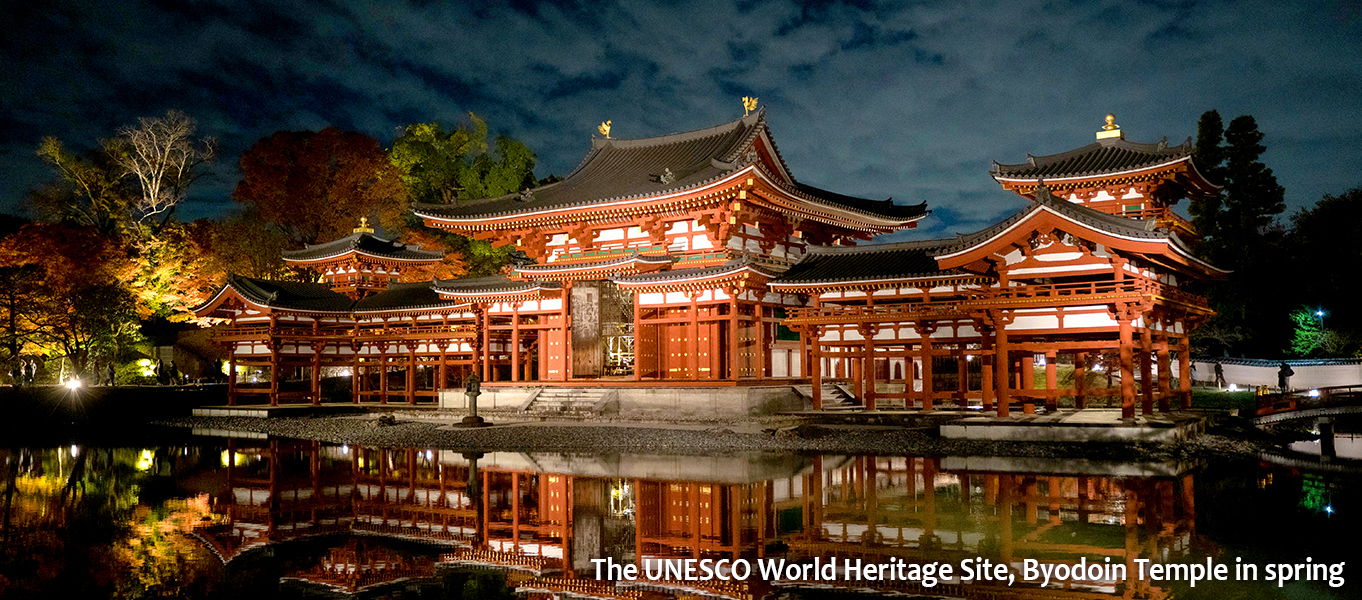
Essay
Scenery from the sake brewery - 011 Mangyō-in
Monthly photo essay on Japanese sake brewing by Mr. Keiichiro Katsuki, a Japanese sake brewing expert.
Please refer to episode 001 for more information on the author.


